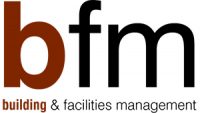Fit EC when replacing fans and gain more than just energy saving

A recent replacement of old failing fans in Fan Coil Units with high efficiency EC fans has shown that the return on investment is beyond just the energy saving. The facility management company has found that the simple control and monitoring offered by EC fan technology is a simple gain on the back of the financial benefit of upgrading to EC.
Until ten years ago all fans in Fan Coil Units were driven by AC induction motors. The fan speed was set by using a transformer to reduce the applied voltage to lower the speed. This method of speed control is not efficient and also limited to a few different voltage tapings on the transformer. In addition, when changing the speed someone had to get a ladder to remove ceiling tiles to then change a position of a switch.
Ten years ago ebm-papst introduced EC motor technology to Fan Coil Units. Not a new technology at the time as it was already utilised by the refrigeration companies in Food Display Cases and other industries such as Clean Rooms. It took a little longer for the HVAC market to pick up the energy saving benefits of EC technology. Ten years later EC technology is now an established technology and since the introduction of the 2013 building regulations is the main way to meet the more demanding specific fan power limit.
ebm-papst is still promoting EC in Fan Coil Units, not in new build but to replace failed and ailing AC fans in old installed fan coil units. A recent upgrade in the headquarters of a leading accountancy and auditing firm has shown that the benefit of EC technology is not just the energy reduction. When ebm-papst visited to discuss the potential savings versus the investment to change, the facility management company realised that there were other benefits too.
The facility management company commented that they never knew when a fan had failed in a Fan Coil Unit (FCU) until they had complaints. Also they could not adjust the speed of the unit due to changes in occupancy without disrupting the office staff or working out of hours. Despite these challenges, the solution was simple; use the speed control and monitoring features of the EC fans. If the return on investment is accepted to upgrade to EC fans then why not also fit simple monitoring and control using ModBus communication.
When the fans were upgraded on the first of the ten floors the control and monitoring arrangement was also fitted, as shown by the diagram. This included a control unit on each FCU to monitor the operation and control the speed of each fan. Two zone controllers across the floor link the FCUs to a central monitoring point on each floor. This unit monitor is the easily accessible point to remotely set fan speeds and monitor the floor. If a fault occurs then this is communicated by BMS to facilitate a controlled maintenance before the occupants notice a change.
What of the energy saving? The second floor of the east wing was changed first to prove the energy savings and benefits of the monitoring and control. Fans in 49 Fan Coil Units were upgraded to EC fans and the end result is a 75 per cent reduction in power consumption, some 24,000 kWh per year saved.
The end client is convinced and has now started the process to upgrade the remaining 1,200 Fan Coil Units as well as the more convenient monitoring and control system on the back of the investment.





